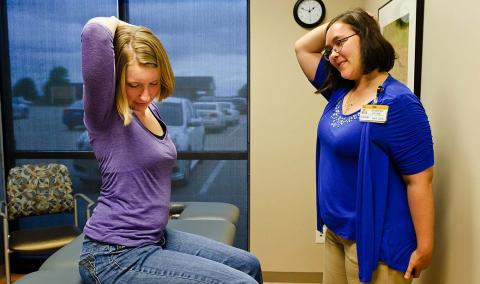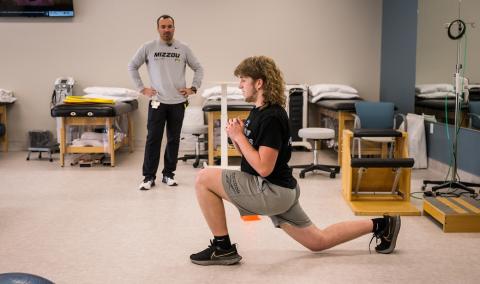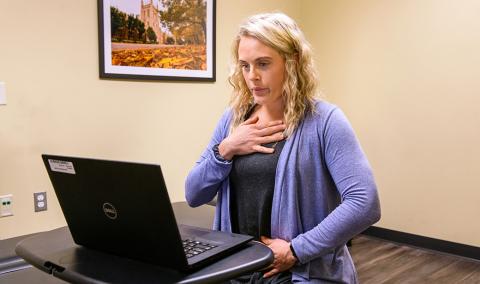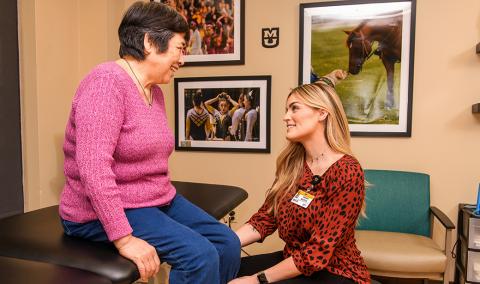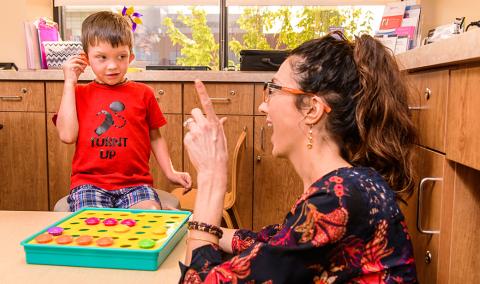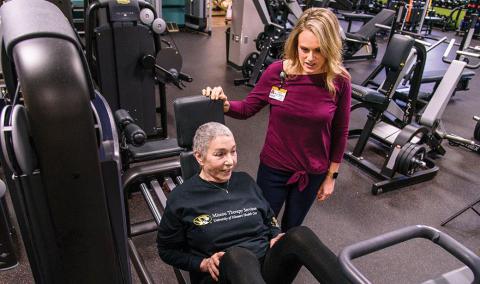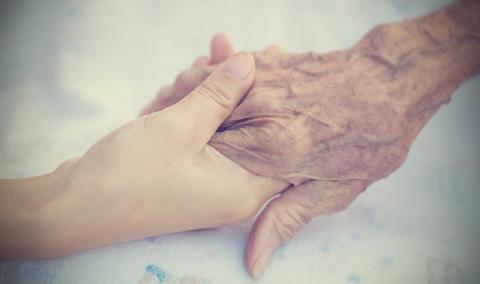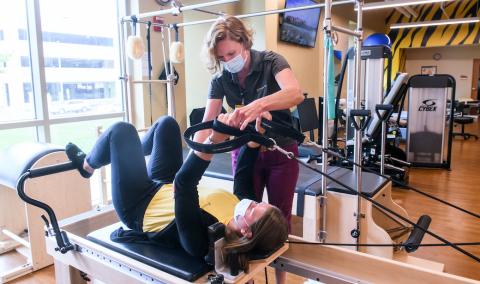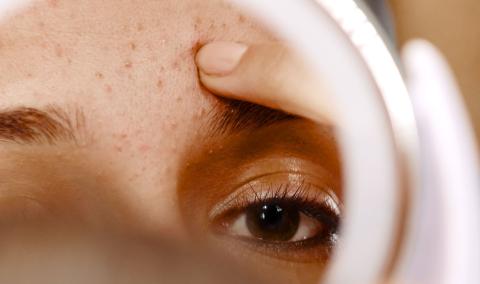MU Health Care offers a variety of nonsurgical pelvic health treatments to help you recover from conditions that can be painful, disruptive or even embarrassing at times.
Pelvic health and pelvic health issues can be very different from one person to the next, which is why our team is made up of many experts with a range of specialties. By working together, with your condition and goals in mind, we create treatment plans that manage or alleviate your symptoms.
Our team includes physical therapists, urogynecology nurse practitioners, OB/GYNs and other pelvic health professionals who specialize in pelvic floor dysfunction. We can treat a full range of symptoms and conditions including:
- Urinary and fecal incontinence
- Urinary and fecal urgency/frequency
- Pelvic/abdominal pain
- Painful intercourse/orgasm
- Painful urination/defecation
- Constipation
- Pregnancy and postpartum care, including return to fitness
- Diastasis rectus abdominus muscle (DRAM)
- Pelvic organ prolapse
- Interstitial cystitis/overactive bladder/chronic urinary tract infection (UTI) pain
- Tailbone pain
- Menstrual cycle pain
- Male pelvic dysfunction and post-prostate surgery recovery
- Pediatric pelvic dysfunction including nighttime bed wetting and constipation
- Pelvic or abdominal surgeries, if necessary
Understanding pelvic floor dysfunction
The pelvic floor is made up of muscles, ligaments, connective tissue and nerves that help support and control the rectum, uterus, prostate, vagina and bladder. Many people do not realize their condition is treatable or are too embarrassed to discuss their symptoms with their doctor. Rest assured, our team offers expert treatment for these disorders in a supportive, understanding environment to help you regain function or address specific symptoms.
What causes pelvic floor dysfunction?
Like all muscle groups, the tissues that support our pelvic organs can be weak, imbalanced or uncoordinated. Other causes of pelvic dysfunction include:
- Overactive or underactive pelvic floor muscles
- Pressure on pelvic and lumbar nerves
- Pregnancy and childbirth
- Injury or trauma
- Surgery in the vagina, prostate, rectum, pelvis or abdomen
- Pelvic organ prolapse
- Inactivity
How we treat pelvic floor dysfunction
Our care team works together to offer specialized nonsurgical treatments and techniques with our rehabilitation specialists. We tailor our services to best address your symptoms and can also offer surgical solutions with our urologic gynecology team if necessary.
Pelvic physical therapy
Your pelvic health care team will help diagnose the cause of your pelvic floor dysfunction and establish a care plan, which includes pelvic floor therapy. Benefits of physical therapy include:
- A personalized treatment plan to meet your goals and help regain control over your life
- Reduced use of medications
- Possible prevention of surgery
- Improved comfort and pleasure with intimacy
- Improved ability to exercise with confidence
Our physical therapists are trained to thoroughly assess your internal and external muscle strength as well as evaluate the supporting tissues to create a treatment program that best fits your individual needs. We can help you strengthen your muscles and retrain your body to control your symptoms.
We offer several forms of therapy, including myofascial release, pelvic floor muscle down-training (relaxation), pelvic floor muscle up-training (strengthening) and behavioral training.
The physical therapists at our Children’s Therapy Center, Rangeline, Forum, Battle Avenue and Buttonwood locations can use real-time ultrasound imaging to allow you to see your pelvic floor muscles. Visual feedback helps you feel what your muscles are doing in combination with verbal cuing and teaching from physical therapists. The ultrasound imaging is done by placing a wand on the abdomen. This wand then generates sound waves to create an image that is transmitted to a screen.
Hypopressive Therapy
At our Therapy Services location on Forum, we offer hypopressive therapy. Also called low-pressure fitness, these exercises are guided by specially trained experts in core and pelvic floor restoration, recovery from hip injuries and postpartum recovery at any stage.
The hypopressive method is a postural and core restoration program designed to coordinate the diaphragm, pelvic floor, abdominals and back muscle groups. It is used in the treatment of pelvic organ prolapse and pelvic floor hypertonicity.
Pregnancy and postpartum care
Changes to your posture during pregnancy can lead to muscle imbalances. Some muscles become tight and sore, while others are stretched and become weak. This can cause pain in the back, pelvis and hips or urinary issues that can sometimes continue postpartum. Fluctuating hormone levels and physical changes because of delivery also contribute to pain or urinary issues in the postpartum phase.
These issues are common and treatable. Please ask your doctor for a referral to one of our specialists if you feel you can benefit from postpartum pelvic floor therapy.
Overactive pelvic floor
Pain or sensation of tightness is the biggest indicator of an overactive pelvic floor. Other indicators can be having a delayed start to your urine stream when you sit down to pee, not feeling empty when you leave the bathroom, constipation, chronic UTIs or high anxiety.
Symptoms of an overactive pelvic floor
- Aching or burning pain in the lower abdomen, pelvis or perineum
- Pain in the hip, buttocks, tailbone or pelvic joints
- Limited sitting tolerance
- Pain with sexual activity
- Tender points in the muscles of the abdomen
- Reduced range of motion in the hips and lumbar spine
- Urinary frequency, urgency, hesitancy or incontinence
- Bowel movements that are painful, constipated or straining
Treatment of an overactive pelvic floor includes myofascial release — a soft-tissue mobilization that relieves overactivity and tension in muscles, lack of mobility in fascia and improves scar tissue mobility — diaphragmatic breathing and relaxation training using visual tools, tactile feedback, verbal cueing and stretching.
Underactive pelvic floor
Incontinence is the biggest indicator of pelvic floor weakness. Urinary or fecal leakage with coughing, sneezing, laughing, changing positions or activity are common complaints. Urge incontinence is when you can’t make it to the bathroom without leaking and the urge can hit you strongly out of nowhere. Since the pelvic floor is part of the core, having low back pain or hip pain can be partly due to a weak pelvic floor.
Tight muscles are also weak muscles. Sometimes muscles compensate for weakness by becoming chronically contracted, resulting in tightness over time. If you have tight muscles but struggle with incontinence, it’s important to learn how to relax the muscles first, then strengthen once they have more range of motion to move through.
Symptoms of an underactive pelvic floor
- Urinary or stool leakage, especially when coughing, sneezing or exercising
- Back or pelvic pain
- Pelvic organ prolapse
- Difficulty achieving orgasm
- Weak, overstretched or uncoordinated pelvic floor muscles
Treatment of an underactive pelvic floor includes personalized rehabilitation sessions performed by physical therapists trained in pelvic health. We will work with you to help correct any postural issues and teach you how to strengthen your weak muscles with exercises including isolated pelvic floor contractions, or Kegels. Our team will also help you learn how to coordinate your pelvic floor with movement to help you restore your functional and recreational activities.
Related Conditions & Treatments
- Aquatic Therapy
- Blood Flow Restriction Therapy
- Cancer Rehabilitation
- Children's Therapy
- COVID Recovery Program
- Pediatric Inpatient Rehabilitation
- Pediatric Pelvic Floor Therapy
- Neurological Rehabilitation
- Occupational Therapy
- Pelvic Pain and Dysfunction
- Physical Therapy
- Postpartum Therapy
- Specialized Therapy
- Speech Therapy
- Sports Therapy



